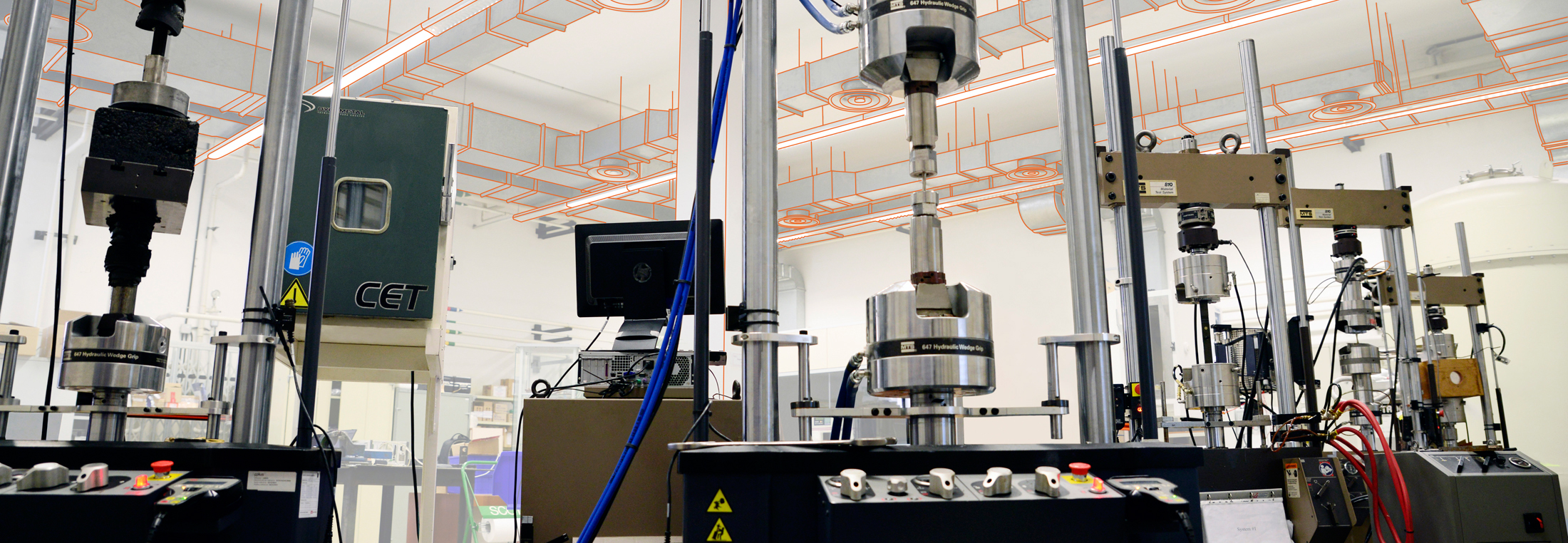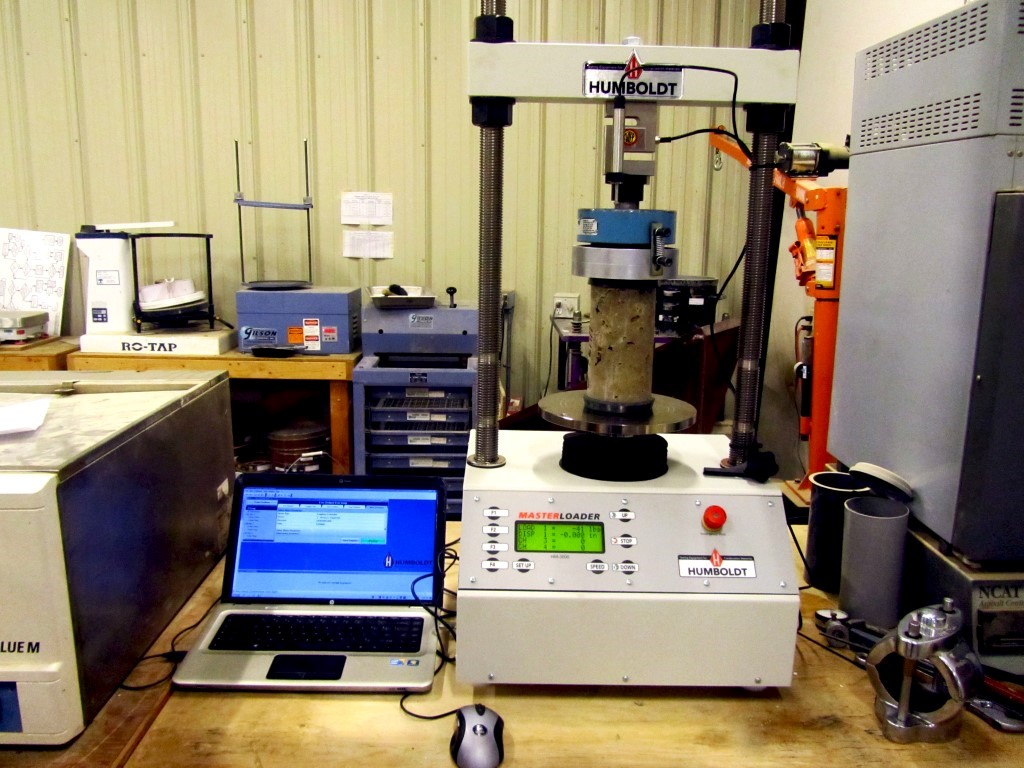Navigate with Confidence: Material Testing Lab Services for Reliable Outcomes
Wiki Article
Unveiling the Secrets of Materials: Innovations in Modern Material Testing
In the ever-evolving world of materials science, researchers are constantly looking for methods to open the covert tricks of numerous substances. The quest to comprehend the residential properties, habits, and prospective applications of materials has resulted in remarkable innovations in contemporary material testing. From nanotechnology and artificial intelligence to non-destructive testing and high-throughput testing, brand-new techniques are emerging that pledge to change our understanding of materials. But what are these advancements? How do they work? And what can they reveal regarding the materials we come across every day? In this discussion, we will decipher the secrets behind these sophisticated technologies and explore how they are reshaping the field of material science.Nanotechnology: Enhancing Material Testing Abilities
Nanotechnology has reinvented product testing by enhancing its capabilities and allowing for unprecedented accuracy and precision. With the capability to manipulate and control materials at the nanoscale, researchers and engineers have actually been able to uncover brand-new insights into the actions and residential or commercial properties of various products. This has actually opened up an entire brand-new opportunity for material screening, making it possible for scientists to delve deeper right into the essential features of products and explore their potential applications.Among the crucial advantages of nanotechnology in product screening is its ability to supply extremely accurate dimensions. By using specialized nanoscale probes and sensors, scientists can obtain thorough info about a material's mechanical, electrical, and thermal residential properties. This level of precision is vital for markets such as aerospace, vehicle, and electronic devices, where also the least deviation from wanted specs can have substantial effects.
Additionally, nanotechnology has permitted for the growth of unique testing methods that were formerly unbelievable. Scanning probe microscopy methods, such as atomic pressure microscopy and scanning tunneling microscopy, make it possible for scientists to imagine and control products at the atomic degree. This unprecedented level of control and observation has led the way for innovations in comprehending product actions and making innovative materials with tailored homes.
Expert System: Transforming Material Analysis
The combination of fabricated intelligence has actually brought concerning a revolution in material evaluation, dramatically improving the speed, precision, and performance of the procedure. With the capacity to analyze huge quantities of data in real-time, expert system (AI) algorithms can swiftly recognize patterns, anomalies, and relationships that might or else go unnoticed by human analysts. This makes it possible for scientists and researchers to get a deeper understanding of products and their residential properties, leading to the advancement of new and better products for different applications.AI-powered product analysis also permits the forecast of material habits under various problems, conserving significant time and sources in the screening stage. By simulating various scenarios, AI algorithms can precisely anticipate how materials will certainly do in various settings, making it possible for engineers to make informed choices regarding their suitability for specific applications.
Furthermore, AI formulas can enhance product screening processes by immediately adjusting criteria and experiment styles based on real-time responses (material testing lab). This not only quickens the testing procedure but additionally guarantees that the optimum quantity of information is acquired from each experiment, leading to even more dependable and thorough results

Non-Destructive Screening: Exploring Materials From Within
Non-destructive screening methods provide an unique means to check out the interior structure and properties of products without causing any kind of damages or modification. These techniques have actually reinvented the field of material screening by making it possible for scientists and engineers to examine products from within, without compromising their integrity. Non-destructive screening methods make use of various innovations and strategies to examine products and supply valuable insights into their make-up, problems, and efficiency.One widely made use of non-destructive testing method is ultrasonic screening, which involves sending out high-frequency audio waves with a product and analyzing the shown waves to establish its internal framework. This approach is typically utilized to spot problems, such as spaces or splits, in metals, composites, and concrete. One more strategy, known as X-ray radiography, utilizes X-rays to develop photos of the interior attributes of a material, making it especially valuable for examining welds and identifying covert issues.
Other non-destructive testing techniques consist of magnetic particle testing, which makes use of magnetic fields to determine surface area and near-surface issues in ferromagnetic materials, and eddy existing screening, which uses electromagnetic induction to detect flaws in conductive materials. These methods, in addition to others like thermography and aesthetic evaluation, offer important info regarding the architectural honesty and top quality of products, guaranteeing their integrity and safety in various applications.
Non-destructive testing is particularly important in markets such as aerospace, vehicle, power, and building and construction, where the efficiency look at more info and integrity of materials are of utmost importance. By permitting extensive material analysis without causing damage or change, non-destructive screening strategies play an essential role in guaranteeing the quality and longevity of products in a vast array of applications.
High-Throughput Testing: Accelerating Product Exploration
High-throughput screening methods have transformed the process of product discovery by accelerating the identification and evaluation of brand-new products. This strategy permits researchers to quickly evaluate a a great deal of products, allowing the recognition of encouraging prospects for further examination.High-throughput screening involves making use of automated systems and robotics to carry out experiments on a large range (material testing lab). This allows researchers to rapidly examine a vast array of products under various problems, such as temperature level, stress, and make-up. By analyzing the resulting information, researchers can determine products with preferred buildings, such as high stamina, conductivity, or thermal security
One of the crucial benefits of high-throughput screening is its capacity to speed up the discovery of brand-new materials with boosted buildings. Conventional methods of product exploration usually entail test and error, which can be ineffective and lengthy. With high-throughput screening, researchers can methodically explore a large variety of products in a portion of the moment, considerably accelerating the exploration procedure.
Additionally, high-throughput screening can likewise supply useful understandings right into the underlying structure-property relationships of materials. By testing a big number of materials with varying structures and frameworks, researchers can better comprehend exactly how different elements influence material properties. This knowledge can after that be utilized to design and optimize products with details properties for various applications, such as power storage great post to read space, electronic devices, and health care.
Advanced Simulation Techniques: Anticipating Material Performance
Advanced simulation strategies play a crucial role in forecasting the efficiency of materials in different applications. These techniques involve using computer system versions and mathematical formulas to mimic the behavior of products under various conditions. By simulating the actions of products at the atomic and molecular level, scientists can get important insights into their mechanical, thermal, and chemical properties.Among the essential benefits of innovative simulation methods is their ability to predict product efficiency before physical screening. This not just saves time and sources however also permits researchers to explore a bigger series of materials and layout specifications. In the area of materials layout, simulations can help recognize the ideal composition and framework of a material to attain specific residential or commercial properties.

In addition to anticipating product performance, these simulation methods additionally help in comprehending the hidden devices that govern material actions. By analyzing the simulation results, researchers can get insights into the basic concepts that dictate the residential properties and efficiency of products.
Conclusion
In final thought, the advancements in product screening methods have greatly boosted our understanding and evaluation of different materials. Nanotechnology has actually enabled for enhanced capabilities in testing and adjusting materials at the nanoscale. Non-destructive screening has actually enabled us to discover the internal homes of materials without creating damage.The quest to recognize the residential properties, behavior, and possible applications of products has led to impressive developments in modern product testing. These strategies have changed the field of product testing by making it possible for designers and researchers to take a look at products from within, without jeopardizing their integrity. By examining a large number of products with varying frameworks and compositions, researchers can much better understand just how different aspects influence product properties. In the area of materials style, simulations can aid determine the optimal make-up and framework of a material to attain specific buildings.
In final thought, the advancements in material screening techniques have actually significantly improved our understanding and analysis of various products.
Report this wiki page